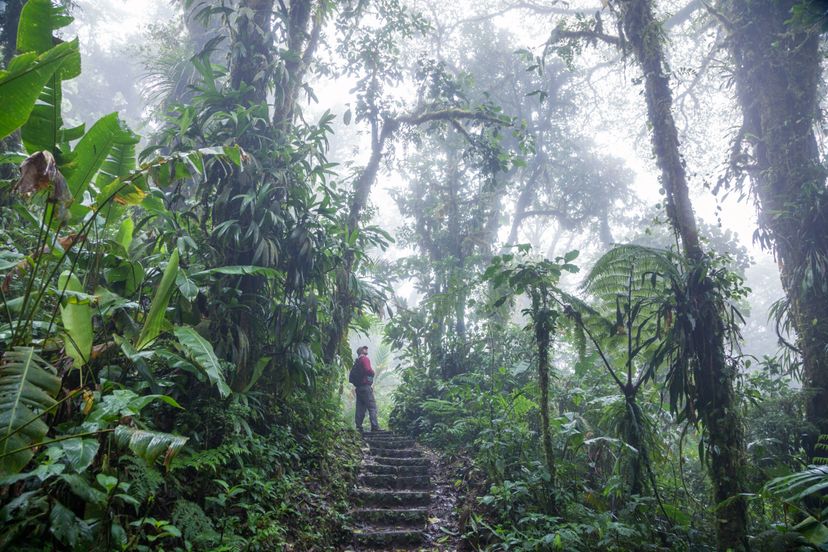
Rainforests have been called our planet’s lungs. Although the official definition of rainforest is still debated, most of us will agree that these fragile and endangered ecosystems are treasure troves of natural diversity and beauty. Rainforests are home to some of the world’s most breathtaking natural panoramas and some of its strangest creatures. You don’t need to be a biologist or a botanist to appreciate the rainforests though, and some of us might be surprised to learn that rainforest ecosystems are closer than we think—some of them might even be in our own backyards. From the tropical rainforests of the Southern hemisphere to the temperate rainforests along continental coasts in the Northern hemisphere, and everything in between, here are 12 beautiful rainforests that prove just how stunning planet Earth really is. Even if you don’t consider yourself an eco-tourist now, this might just convince you to add some of these destinations to your bucket list.
Advertisement
12. Yanoda (China)
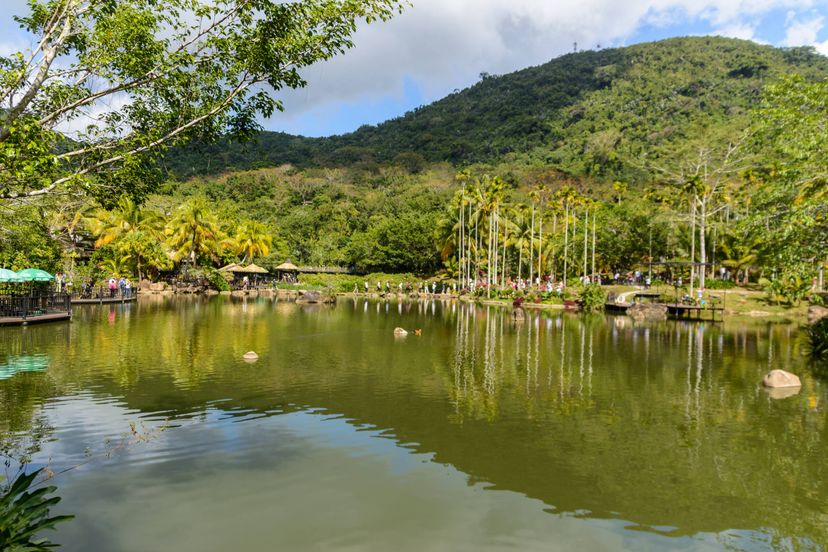
The Yanoda Rainforest is located in Hainan island province, near the city of Sanya on the south coast of the island. Sanya is a well-known tourist destination as the southern-most city on the island. Part of the area’s popularity is thanks to the stunning sights of the Yanoda Rainforest, which is a popular tourist attraction itself. Of 123 square kilometers, 45 square kilometers have been set aside as the Yanoda Rainforest Cultural Tourism Zone, which has been rated by the Chinese government as an AAAAA scenic site, the highest possible rank. The government plans to invest almost 4 billion renminbi; to date, around 2 billion RMB has been invested in the development of the Rainforest Valley and the Dreamworld Valley, which allow visitors to travel 18 kilometers into the park on ring roads. Stairs, suspension bridges, and plank roads lead adventurers to giant boulders, a variety of flora and fauna, and waterfalls.
A shuttle runs between Yanoda and Sanya and visitors can purchase tickets for various activities within the park or choose from packages that include lunch and a variety of activities. Admission prices begin at 170 yuan.
Advertisement
11. Sinharaja (Sri Lanka)
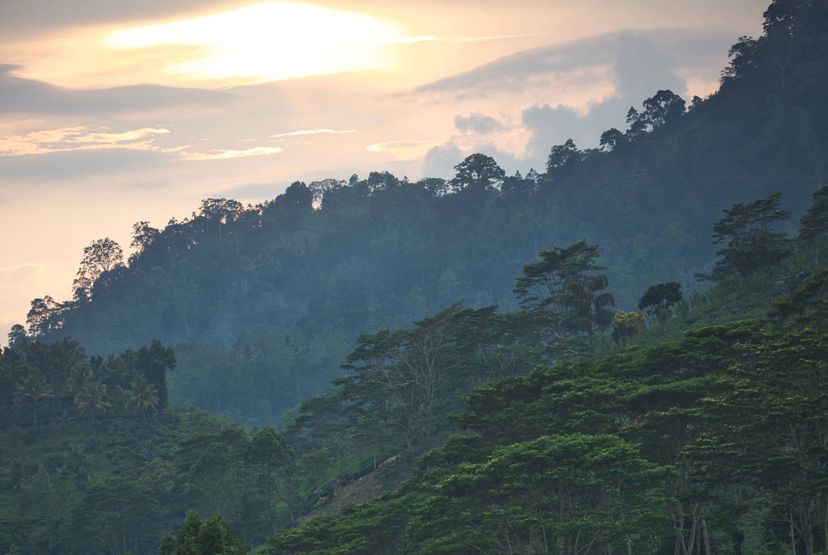
Sinharaja is a large park in Sri Lanka. It was saved from most logging activities due to its inaccessibility and in 1978, UNESCO created it as a World Biodiversity Reserve and later designated it a World Heritage Site. Today, the hilly virgin rainforest is a treasure trove of native Sri Lankan flora and fauna, some of them endemic to the island.
Sinharaja is only 13 miles east-to-west, and less than 5 miles from north to south. Nonetheless, it represents some of the best-preserved lowland tropical rainforests on the island. Although wildlife isn’t as easy to see as at parks like Yala, there are some 15 Sri Lankan leopards living in the park, along with stripe-necked mongoose, golden palm civets, purple-faced langur monkeys, green pit vipers, and a multitude of birds and other creatures. Keep an eye out for the whistling lizard, which is best known for its alarm call. The forest itself is dense with flora typical of a humid, tropical forest. Trees are packed around 45 to 55 individuals per hectare and the average height tends to be around 40 meters, with some specimens reaching up to 50 meters!
Advertisement
10. Hawaii (United States)
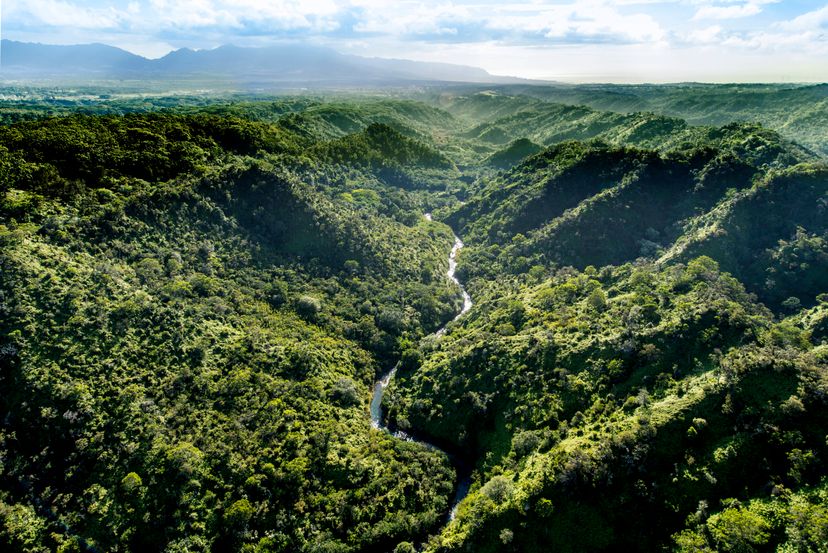
Most of us think of tropical rainforests as some kind of other world, places that exist in lands “far, far away.” They’re certainly not American, at least. But contrary to popular belief, there’s at least one place in the U.S. that you can find a tropical rainforest: the state of Hawaii. Tropical rainforests extend over each of the Hawaiian islands, encompassing some 2,600 square miles. Since the islands have been isolated by the Pacific Ocean for millions of years, the plant and animal species that inhabit these forests are unique; you won’t find creatures like this anywhere else under the sun!
The Hawaiian rainforests contain coastal mesic forests, mixed mesic forests, and “wet” forests. All of these subtypes have a typical rainforest structure and include both native species like koa and naturalized Polynesian plant species, such as kukui and milo. From 4,100 feet, forests receive 118 inches of rain or more each year. Many native species of birds and animals live here, but the forests are threatened by non-native species such as feral pigs. Travelers should consider a visit to these forests—before they disappear forever.
Advertisement
9. Daintree Rainforest (Australia)

Along the northeast coast of Australia, on the banks of the Daintree River, lies a dense rainforest. The forest, known as the Daintree Rainforest, is one of the most complex ecosystems in Australia and indeed, anywhere on Earth. Despite covering less than 1 percent of the Australian landmass, the forest contains 3 percent of frog, reptile, and marsupial species, 7 percent of bird species, and 90 percent of bat and butterfly species in Australia. It is also home to many primitive and ancient species, estimated to date back some 110 million years. The Idiot Fruit (idiospermum australiense) is one of these primitive species, one of the most ancient and rare flowering plants on earth.
The landscape offers nature-lovers deep gorges, swift-flowing streams and waterfalls, dense forest, and soaring peaks in ancient mountain ranges. The forest’s position along the coast allows for the tropical rainforest to be captured in the same image with white sand beaches and coastal reefs, an extremely rare combination difficult to replicate anywhere else on the planet. Art lovers will appreciate the Daintree Forest as much as scientific minds!
Advertisement
8. Appalachian Rainforest (United States)
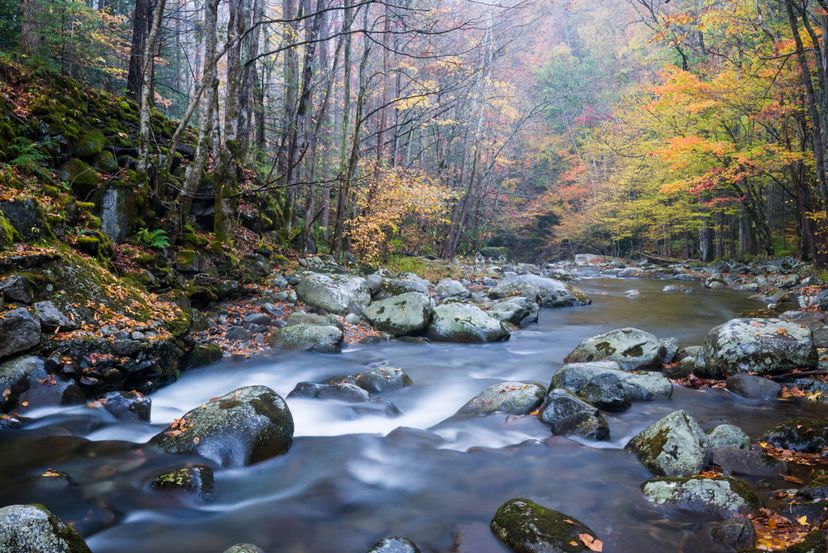
While there may not be many “tropical” rainforests that are close at hand for most North Americans, there are rainforests on the North American continent. In fact, most people probably don’t realize that much of the Appalachian mountain range in the eastern U.S. is designated as a temperate rainforest biome. The area has a cool and mild climate and receives over 60 inches of rainfall per year. The forest is home to more than 30 species of salamanders. Mammals include squirrels, black bears, and white-tailed deer. Fir, spruce, beech, and birch trees are common.
Humans have inhabited the forest for around 10,000 years. The Cherokee Nation was forced to relocate to Oklahoma between 1838 and 1839. The Appalachian Trail, which spans more than 2,000 miles, was completed in 1937. Hikers can follow the route from Georgia to Maine. There are also several parks, including the Nantahala National Forest, the Great Smoky Mountains National Park, and the Cherokee National Forest, in the area. The Cherokee National Forest reports millions of visitors each year.
Advertisement
7. Harapan (Indonesia)

On the island of Sumatra, in the South Pacific, a 98,555-hectare swath of land makes up the Harapan rainforest in Jambi province. The forest is about 20 percent of the island’s remaining forestation, despite having been selectively logged since the 1970s. It is also extremely biodiverse, sheltering some 300 different species of birds, the endangered Sumatran tiger, and the Sumatran rhinoceros. Since the forest is vulnerable to logging, the British Royal Society for the Protection of Birds has been campaigning to plant 1 million new trees in the area. The forest is currently managed by the society, along with Burung Indonesia and Birdlife International, under a 95-year license. A proposed highway through the forest is a current threat.
The Harapan Rainforest has a program that allows eco-tourists to travel through the area on a number of different adventures. For those interested in hiking, there are 4 different treks that can be undertaken, each offering a different level of challenge. Other popular guided tours include the river safari and the night safari. For those adventurous enough, camping overnight is an option, and for anyone who wants to leave a (green) mark on the forest, tree-planting is encouraged.
Advertisement
6. North Western Ghats (India)
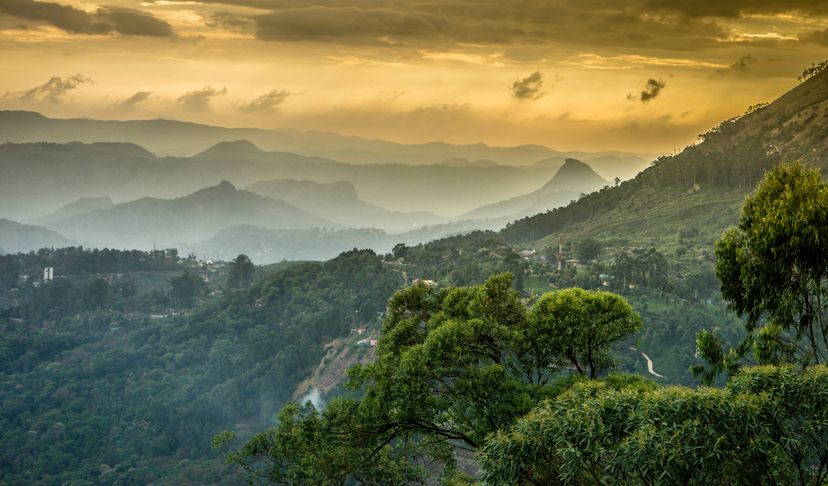
The Western Ghat Mountains in India are home to not 1, not 2, but 4 distinct tropical rainforest ecoregions. The North Western Ghats rainforest is in southwestern India, in the northern portion of the Ghats range. The forest extends from Gujarat in the southeast to Karnataka, where the Joga Falls, the second-highest of India’s waterfalls, is a major tourist attraction. The forest covers nearly 19,000 square miles and extends to 1,000 meters up into the mountains.
The World Wildlife Fund designated 13 protected areas within the forest. Together, these areas cover about 5 percent of the forest area. Of these, Anshi National Park, in Karnataka, is one of the best to visit. The park is open between 6 am and 6 pm and offers camping, boating, rafting, canoeing, and trekking. One of the most popular attractions is the spectacular Dudhsagar waterfall, which can be reached on a 20-kilometer trek. Black panthers, Asian elephants, and tigers are known to live in the park but are rarely seen. Many species of birds and reptiles also inhabit the park. Peak tourist season is between October and May, which are considered the best months to visit, although the climate is humid year-round.
Advertisement
5. Vancouver Island (Canada)
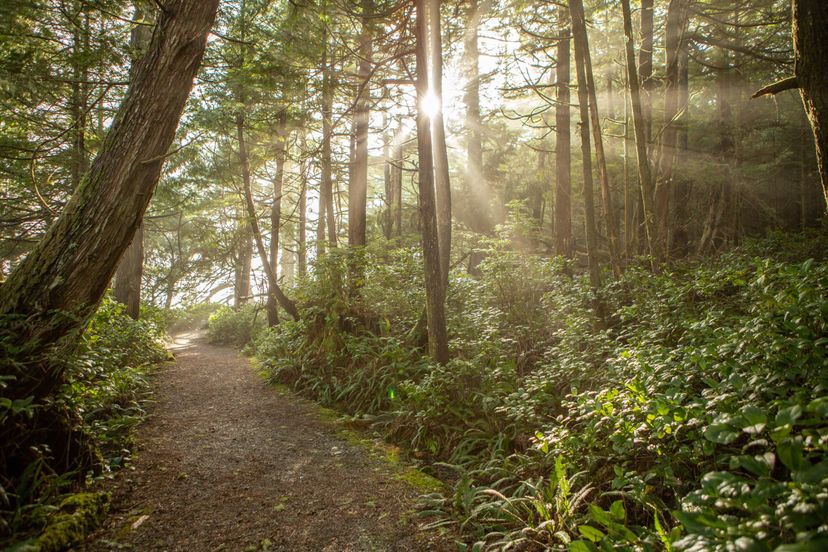
The word “rainforest” tends to evoke images of tropical regions and deep, dense jungles. In reality, there are many different types of rainforests scattered around the world, including the temperate rainforests of coastal British Columbia, Canada, which covers Vancouver Island. Part of the larger Pacific Coast temperate rainforest, the island’s rainforest flora tends to mirror that of the mainland, including the famous “big” trees of BC: western hemlock, yellow cedar, Douglas-fir, and western white pine. Some of the tallest Douglas fir specimens ever recorded were found on Vancouver Island. To the south and the east of the island, vegetation is more varied, including madrone, Oregon-grape, and red cedar. Maple and red alder trees can also be found.
The animals that inhabit this forest include black bears, cougars, Roosevelt elk, Vancouver Island marmot, and Vancouver Island wolf. The southern portion of the island is heavily populated and numerous opportunities for recreation are available. Hiking is one of the most popular pastimes on the island, as it is also home to a number of peaks, including the Golden Hinde. Lakes and rivers are plentiful, as are fjords along the western coast.
Advertisement
4. Primorsky Krai (Siberia, Russia)
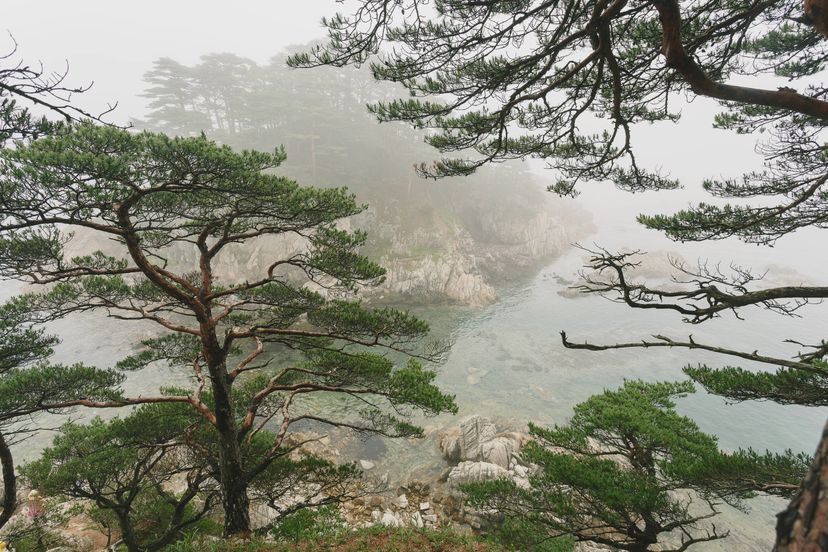
Most of us think of Siberia as an empty tundra with fields of snow stretching across vast expanses. In truth, Siberia is such a huge swath of land, accounting for as much as 10 percent of Earth’s landmass, that it inevitably has many different types of biomes and ecosystems. From the tundra in the north to steppes and plains, the Siberian landscape is rich and varied.
Perhaps the most “shocking” biome is a rainforest in Primorsky Krai, a region in southeast Siberia that borders on the Pacific Ocean and China. Primorsky Krai is almost 80 percent forested and most of that forest is a temperate rainforest. The forest is unlike any other on Earth in that it remains mostly intact, although it is threatened by illegal logging and poaching. It is one of the last refuges for the Siberian tiger and the Amur leopard, among other endangered species. The area is temperate, with the average temperature hovering around 1 degree Celsius in the north and 5 degrees in the south. Precipitation is estimated between 600 and 850 millimeters each year.
Advertisement
3. Monteverde (Costa Rica)
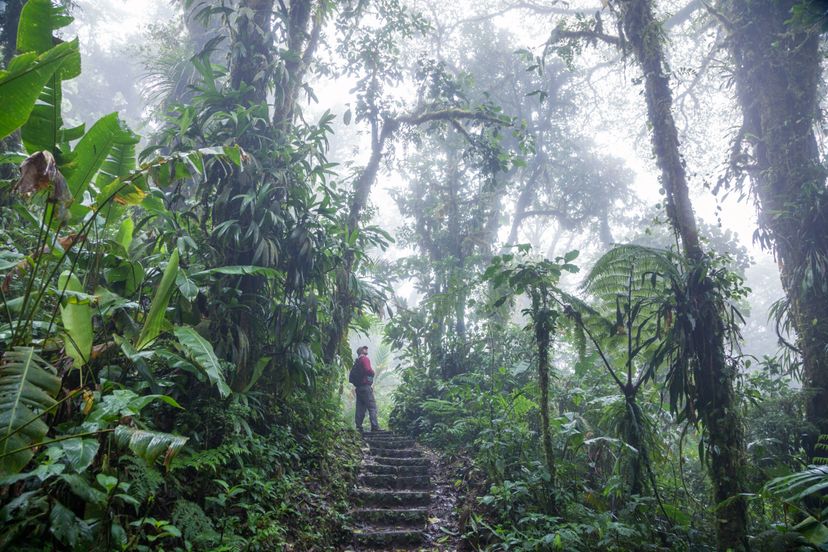
A peculiar and specialized type of rainforest is known as a “cloud forest.” These forests typically appear at higher elevations, usually in mountainous regions. Like their tropical counterparts, they experience high rainfall amounts, which make them wet, but they’re often a little bit cooler. The forests develop in the saddle area of mountainous ranges, where clouds will gather, shrouding the forest in almost omnipresent fog. The fog condenses around tree leaves, which then drips down to the forest floor.
Cloud forests are important and delicate ecosystems that support a smorgasbord of life. Monteverde in Costa Rica is one such cloud forest. Perhaps the most famous of the few cloud forests around the globe, Monteverde was only “discovered” in the 1950s by some American Quakers who moved to the area. The Monteverde Cloud Forest Reserve was founded in 1972. Around 70,000 tourists visit the reserve each year, traversing well-maintained trails and discovering the area’s wealth of flora and fauna, including over 500 species of orchids and 161 species of reptiles and amphibians. The area includes a mix of North and South American species.
Advertisement
2. Amazon Rainforest (South America)
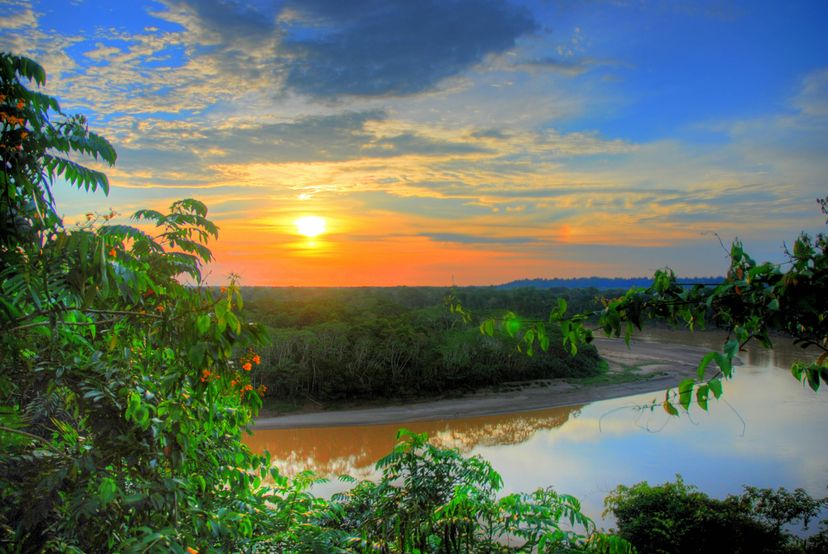
Also known as the Amazon jungle and Amazonia, this tropical rainforest covers most of the Amazon River basin in South America. The forest stretches some 2.1 million square miles, through 9 of 14 South American states. Brazil contains up to 60 percent of the forest, the most of any nation. Representing over half of the world’s remaining rainforests, the Amazon is easily the best-known rainforest on Earth. It is also the largest, with an estimated 390 billion trees encompassed in its borders.
The Amazon has unparalleled biodiversity: of every 10 species known to us, at least 1 of them lives in the Amazon. Flora are also diverse; the forest has up to 16,000 different species of trees. An examination of 62 acres in Ecuador was found to have 1,100 different types of trees! This dense forest also has a considerable impact on Earth’s climate. Deforestation has become a major concern in light of this. Despite this, the Amazon has remained largely impenetrable and many Native tribes still live deep in the forest. It was discovered that much of the lush vegetation found in the forest is the result of careful human management to create richer soils over 11,000 years.
Advertisement
1. Tongass National Forest (United States)
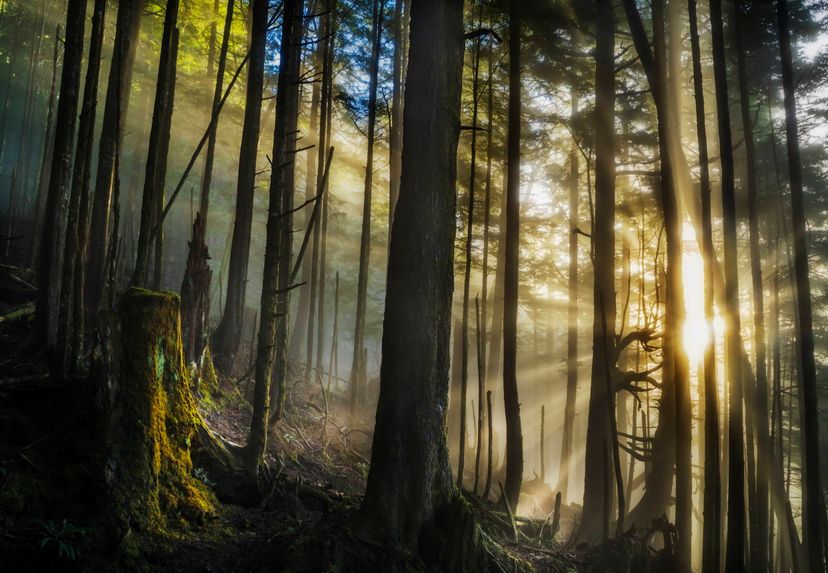
The largest national forest in the U.S., Tongass consists of 17 million acres of temperate rainforest in the southeast of Alaska. While Alaska might be one of the last places we’d expect to find a rainforest, Tongass is part of the larger Pacific temperate rainforest, which the rainforests on the Canadian West coast mentioned earlier also belong to. Tongass is remote and relatively undisturbed, so it serves as an important refuge for many endangered animal species and rare plants. Much of the old-growth forest is now protected from logging and will never be harvested. The 75,000 people who inhabit the forest are Alaskan Native peoples who depend on the land for their livelihood.
Tongass is Earth’s largest remaining temperate rainforest, although much of the area includes wetlands, snow, ice, and rock. Close to 1 million people visit the forest every year. Approximately 150 cabins are available for rent and there are several areas that are designated bear-viewing areas. There are also 15 campgrounds scattered through the forest, many with backdrops against the magnificent Alaskan wilderness and glaciers. Kayaking and canoeing through fjords is a popular activity.
Advertisement